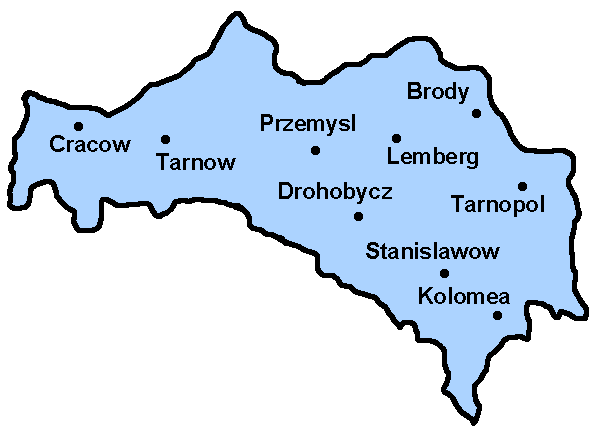A Brief History of Galicia
- Originally called Galicia-Lodomeria by the Austrians when they took that territory from the Polish-Lithuanian Commonwealth during the First Partition of Poland in 1772, its borders varied slightly over the years, especially during the Napoleonic Wars, following which Krakow and surrounding lands were eventuall added to the province.
- The largest province of the Austrian Empire, Galicia bordered Moravia to the west, the Russian Empire to the north and east, and Hungary and the Ottoman Empire (Moldavia) to the south.
- Returned to Poland when that state was reestablished after the First World War.
- Divided between Ukraine and Poland after the Second World War. Today, the eastern half of Galicia is part of Ukraine, and the western half is part of Poland. The term “Galicia” no longer describes an administrative or political region in either country. In Poland, Galicia is often called “Malopolska”, or Lesser Poland.
- Bukowina, acquired by the Austrian Empire from the Ottoman Empire in 1775, merged with Galicia in 1787, became a separate province of the Austrian Empire after 1849, and shares with Romania a history of Turkish and Romanian administration that was not experienced by Galicia. Bukowina is not included in the focus of Gesher Galicia. Contact the Romanian Special Interest Group, Rom-SIG.

The Pronunciation of “Galicia”
- The pronunciation of the word “Galicia” is quite varied among researchers. The local pronunciation, if written phonetically by a native speaker of American English, would be something like [gal-EE-tsya]. The Polish spelling of the name is “Galicja.” The German spelling is “Galizien.”
More Information
- A Guide to Galician Districts
- 1877 Galician Administrative Districts
- Slownik Geograficzny
The Slownik geograficzny Królestwa Polskiego i innych krajów slowianskich (Geographical dictionary of the Kingdom of Poland and other Slavic countries) is a 15-volume gazetteer published between 1880 and 1902. - Historical Austro-Hungarian Empire Exchange Rates
